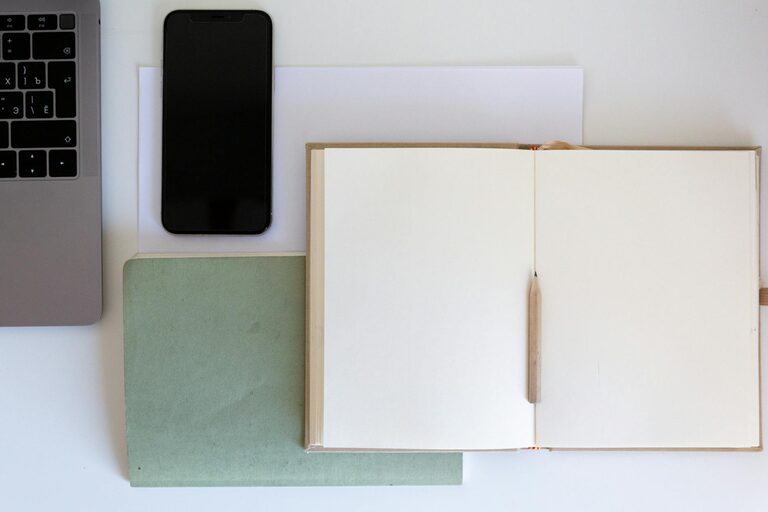
Simple Ways to Reduce Household Paper Clutter for a Tidy Home
Managing paper clutter is a common challenge in many households. Piles of bills, receipts, magazines, and old documents can quickly take over your countertops, desks, and drawers, making your home feel chaotic and overwhelming. The good news is that reducing paper clutter doesn’t have to be complicated or time-consuming. By implementing a few simple strategies, you can create a system that keeps your paper piles under control and helps maintain a neat and orderly home.
In this post, we’ll explore some practical and easy-to-follow ways to reduce household paper clutter.
Why Paper Clutter Happens
Before diving into solutions, it helps to understand why paper clutter accumulates in the first place. Some common reasons include:
– Incoming mail and paperwork: Daily mail, school papers, work documents, and receipts keep arriving.
– Lack of an organizing system: Without a routine for sorting and storing papers, they pile up.
– Sentimental attachment: Holding onto every piece of paper “just in case” or for memory’s sake.
– Procrastination: Delaying decisions on which papers to keep or toss.
Recognizing these factors can help you develop habits to curb clutter before it builds up.
Easy Steps to Reduce Paper Clutter
1. Set Up a Sorting Station
Create a designated spot where all incoming papers can be gathered immediately. This could be a tray, basket, or crate located near your mailbox or main entrance. Having a centralized spot prevents papers from scattering around the house.
When you receive mail or bring home paperwork, place it directly in this area until you’re ready to sort it through.
2. Sort Papers into Clear Categories
Once a day or every few days, go through your sorting station and divide papers into straightforward categories such as:
– Bills and statements: Items that require payment or review.
– Important documents: Birth certificates, insurance policies, tax papers.
– Action items: Invitations, forms to fill out, school notices.
– Recyclables: Junk mail, expired coupons, unnecessary flyers.
– To file: Papers that need to be stored for records but don’t require immediate attention.
Use labeled folders, trays, or containers for these categories to keep everything organized.
3. Adopt a Filing System
For documents you need to keep, invest in a simple filing system. This could be a filing cabinet, portable file box, or accordion file with labeled folders. Keep the system accessible and easy to use by labeling folders clearly and grouping similar documents together.
Examples of common folders for home filing include:
– Medical records
– Bills to pay
– Insurance
– Taxes
– Warranties and manuals
– School and activity papers
4. Go Paperless When Possible
Many companies now offer the option to receive bills, bank statements, and other correspondence electronically. Opting for paperless billing and statements can drastically reduce the amount of paper coming into your home.
Additionally, consider scanning important documents and saving digital copies on your computer or in cloud storage. There are many smartphone apps and scanners designed to make digitizing paper straightforward.
5. Recycle Regularly
Don’t let outdated papers linger around. Schedule a regular time—weekly or monthly—to recycle unneeded papers, old magazines, and junk mail. Keeping a recycling bin in a convenient spot makes it easier to toss papers as soon as you’re done with them.
6. Limit Sentimental Paper Keepsakes
It’s natural to want to hold onto meaningful items like children’s artwork, greeting cards, and letters. However, if you keep everything, paper clutter can quickly get out of control.
Try these approaches to manage sentimental papers:
– Select a few favorites and keep them in a special scrapbook or memory box.
– Photograph or scan artwork and cards to create a digital archive.
– Regularly sort through keepsakes and gently weed out items that no longer hold significant meaning.
7. Create a “To-Do” Folder or Tray
For papers that require a response or action, use a dedicated folder or tray. Make it a habit to check this spot daily, so important tasks don’t get buried under piles of other papers.
8. Use a Shredder for Sensitive Documents
When discarding personal or financial papers, using a shredder helps protect your information and reduces paper waste. This step also makes recycling safer and gives you peace of mind.
Tips to Maintain a Clutter-Free Paper System
– Deal with mail daily: Avoid letting mail stack by quickly sorting as you bring it inside.
– Stick to your filing system: Set aside time weekly to file papers properly.
– Purge periodically: Every few months, review your filing system and remove documents you no longer need.
– Use labels: Clear labels help you find and file papers faster.
– Involve family members: Encourage everyone in the household to follow the system.
Final Thoughts
Reducing household paper clutter is about creating habits and systems that work for your lifestyle. By setting up clear sorting areas, filing important documents, going paperless where possible, and making recycling a routine, you can keep your living space organized and stress-free.
These simple steps don’t require much time but can have a big impact on your home’s tidiness and your peace of mind. Start small, stay consistent, and watch your paper piles shrink!
—
Feel free to share your own tips or ask questions in the comments below. Happy decluttering!
